
Munich is the capital and most populous city of the Free State of Bavaria. With a population of 1,589,706 inhabitants as of 29 February 2024, it is the third-largest city in Germany, after Berlin and Hamburg, and thus the largest which does not constitute its own state, as well as the 11th-largest city in the European Union. The city's metropolitan region is home to about 6.2 million people and the third biggest metropolitan region by GDP in the European Union.
The Reinheitsgebot is a series of regulations limiting the ingredients in beer in Germany and the states of the former Holy Roman Empire. The best known version of the law was adopted in Bavaria in 1516, but similar regulations predate the Bavarian order, and modern regulations also significantly differ from the 1516 Bavarian version. Although today the Reinheitsgebot is mentioned in various texts about the history of beer, historically it was only applied in the duchy, electorate, then Kingdom of Bavaria and from 1906 in Germany as a whole, and it had little or no effect in other countries or regions.

Pale lager is a pale-to-golden lager beer with a well-attenuated body and a varying degree of noble hop bitterness.

Märzen or Märzenbier is a lager that originated in Bavaria, Germany. It has a medium to full body and may vary in colour from pale through amber to dark brown. It was the beer traditionally served at the Munich Oktoberfest. The geographical indication Oktoberfestbier is protected in the EU and can only be used for Märzen that is brewed in Munich.
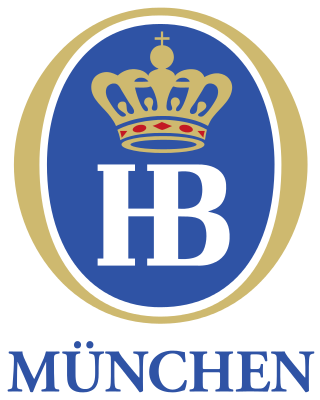
The Staatliches Hofbräuhaus in München is a brewery in Munich, Germany, owned by the Bavarian state government. The Hof (court) comes from the brewery's history as a royal brewery in the Kingdom of Bavaria. The brewery owns the Hofbräuhaus am Platzl, the Hofbräukeller and one of the largest tents at the Oktoberfest (Hofbräu-Festzelt).
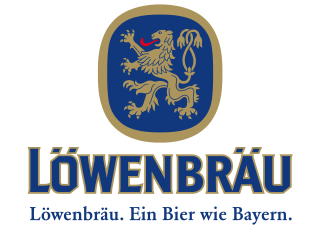
Löwenbräu is a brewery in Munich. Its name is German for "lion's brew". Most Löwenbräu beers are marketed as being brewed according to the Reinheitsgebot, the Bavarian beer purity regulation of 1516.

Spaten-Franziskaner-Bräu GmbH is a brewery in Munich, Bavaria, Germany. It produces Spaten and Franziskaner beers.

Capital Brewery is a brewery in Middleton, Wisconsin. Founded on March 14, 1984, by entrepreneur Ed Janus in Madison, Wisconsin, it is situated in a former egg processing plant. The company first began production in 1986 and now produces over 20,000 barrels of beer annually. It produces 24 distinct beers, of which nine are annuals, five are seasonal, and ten are limited edition. Most are made using the strict Reinheitsgebot guidelines.

The Hofbräuhaus am Platzl is a beer hall in Munich, Bavaria, Germany, originally built in 1589 by Bavarian Duke Maximilian I as an extension of the Staatliches Hofbräuhaus in München brewery. The general public was admitted in 1828 by Ludwig I. The building was completely remodeled in 1897 by Max Littmann when the brewery moved to the suburbs. All of the rooms except the historic beer hall ("Schwemme") were destroyed in the World War II bombings. The reopening of the Festival Hall in 1958 marked the end of the post-war restoration work.

Augustiner-Bräu is a brewery in Munich, Germany, established in 1328. It is Munich's oldest independent brewery.
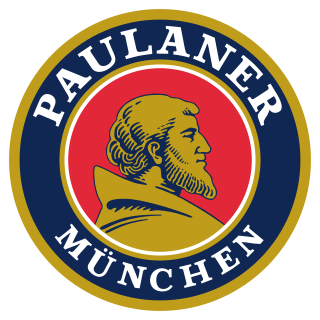
Paulaner is a German brewery, established in 1634 in Munich by the Paulaner Order of mendicant friars. Now owned by the Schörghuber family, it is one of the six breweries which provides beer for Oktoberfest. Paulaner ranks number six among Germany's best-selling beers.

A beer festival is an event at which a variety of beers are available for purchase. There may be a theme, for instance beers from a particular area, or a particular brewing style such as winter ales.
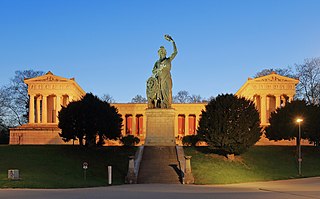
Theresienwiese is an open space in the Munich borough of Ludwigsvorstadt-Isarvorstadt. It serves as the official ground of the Munich Oktoberfest. A space of 420,000 square metres (4,500,000 sq ft), it is bordered in the west by the Ruhmeshalle and the Bavaria statue, symbolizing the State of Bavaria, and in the east by Esperantoplatz, a square named for the international language Esperanto. There, a memorial commemorates the victims of the 1980 Oktoberfest bombing. Bavariaring, an orbital road, provides access to visiting traffic. In the north the towers of the Paulskirche are visible.
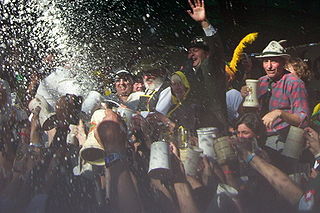
The Oktoberfest is a two-week festival held each year in Munich, Germany during late September and early October. It is attended by six million people each year and has inspired numerous similar events using the name Oktoberfest in Germany and around the world, many of which were founded by German immigrants or their descendants.

Oktoberfest is the world's largest Volksfest, featuring a beer festival and a travelling carnival, and is held annually in Munich, Bavaria, from mid- or late-September to the first Sunday in October, with more than six million international and national visitors attending the event. Locally, it is called d'Wiesn, after the colloquial name for the fairgrounds, Theresienwiese. Oktoberfest is an important part of Bavarian culture, having been held since the year 1810. Other cities across the world also hold Oktoberfest celebrations that are modeled after the original Munich event.
The Deutsche Brauereimuseum at the St.-Jakobs-Platz in Munich was founded in 1952 on the initiative of the Bavarian Hofbräuhaus.

The Odeonsplatz is a large square in central Munich which was developed in the early 19th century by Leo von Klenze and is at the southern end of the Ludwigstraße, developed at the same time. The square is named for the former concert hall, the Odeon, on its northwestern side. The name Odeonsplatz has come to be extended to the parvis (forecourt) of the Residenz, in front of the Theatine Church and terminated by the Feldherrnhalle, which lies to the south of it. The square was the scene of a fatal gun battle which ended the march on the Feldherrnhalle during the 1923 Beer Hall Putsch.

The Barthelmarkt is an annual Volksfest in Manching, near Ingolstadt, Germany. It is held on the last weekend of August and lasts four days. Every year, about 250,000 people visit it.

There are a series of tents at the Oktoberfest, which are operated by different Wiesn-hosts and in which some come from a long tradition. Some tents belong to the local breweries. The setup work for the tents often begins three months before the start of the festival.

Augustiner-Keller is a traditional restaurant and beer garden in the Maxvorstadt district of Munich, Germany. The restaurant was opened in the first half of the 19th century and is one of the most popular beer gardens in Munich. Augustiner-Keller at Arnulfstraße 52 sells beer by Augustiner-Bräu, the oldest brewery in Munich.



















